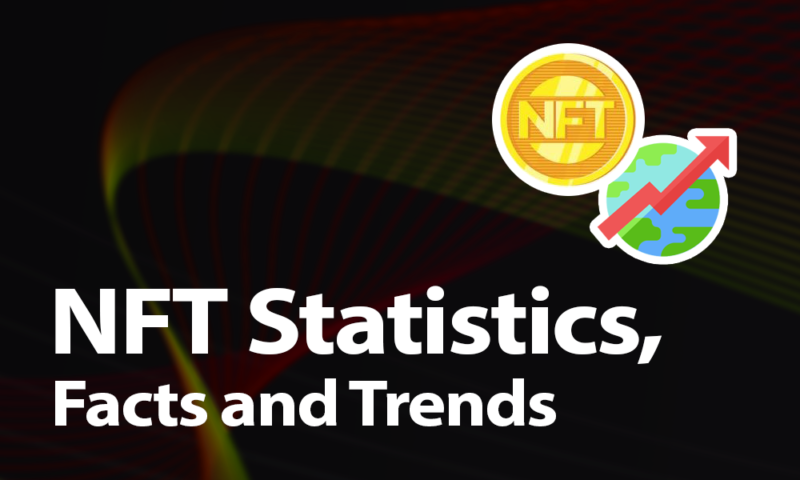NFT Statistics, Facts & Trends in 2024: All You Need to Know About Non-Fungible Tokens
The NFT market can be confusing to outsiders. Using blockchain technology to buy the original copy of digital assets doesn’t sound like it should make any sense, yet non-fungible tokens (NFTs) have seen a massive rise in interest over the last year. This has led to some very interesting statistics and trends in the NFT market, which you can find out in this article.
In early 2021, there was a sharp rise in the weekly sales of non-fungible tokens (NFTs) online. There were also several records being broken and many people looking to learn more about NFTs and their worth. So, to give you some answers to these questions, we made this list of 21 NFT statistics, facts and trends.
Key Takeaways:
- “NFT” stands for “non-fungible token,” and NFTs are a way of proving ownership over digital goods.
- Although most NFTs rely on the ethereum blockchain, a few alternatives have appeared in recent years.
- The most expensive NFT ever sold went for $69 million.
- Thousands of NFT sales worth millions of dollars in total value are traded each day.
Despite the fact that the term “non-fungible token” has been around for less than a decade and the technology it’s built on was developed in 2012, there’s plenty of interesting information about NFTs (learn more in our what are NFTs guide).
However, before sinking our teeth into the more interesting numbers, we’ll begin with a basic guide to how NFTs work and where they came from.
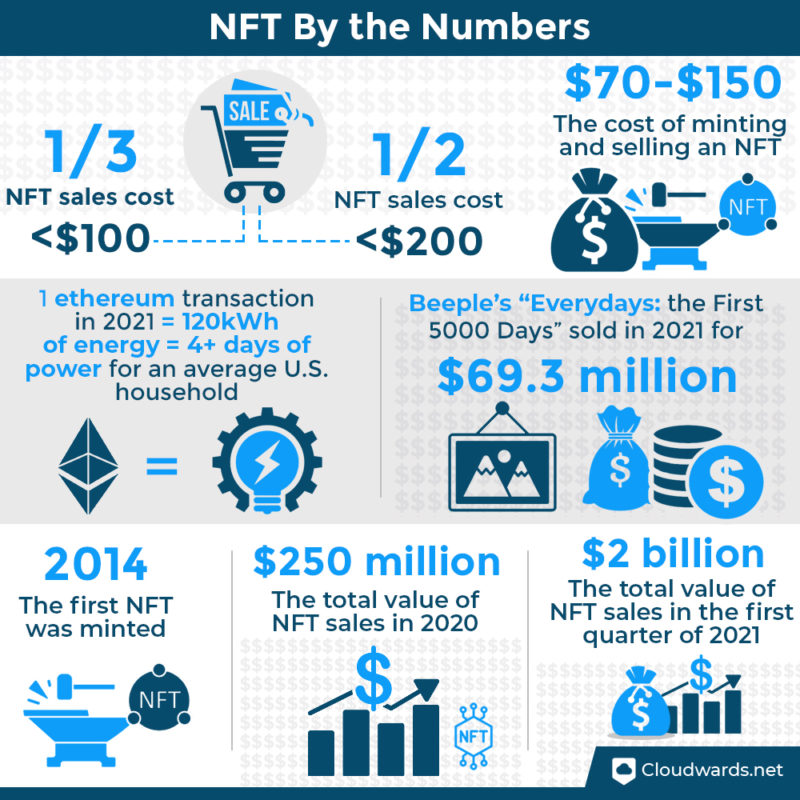
NFT Statistics: What Are NFTs & How Do They Work?
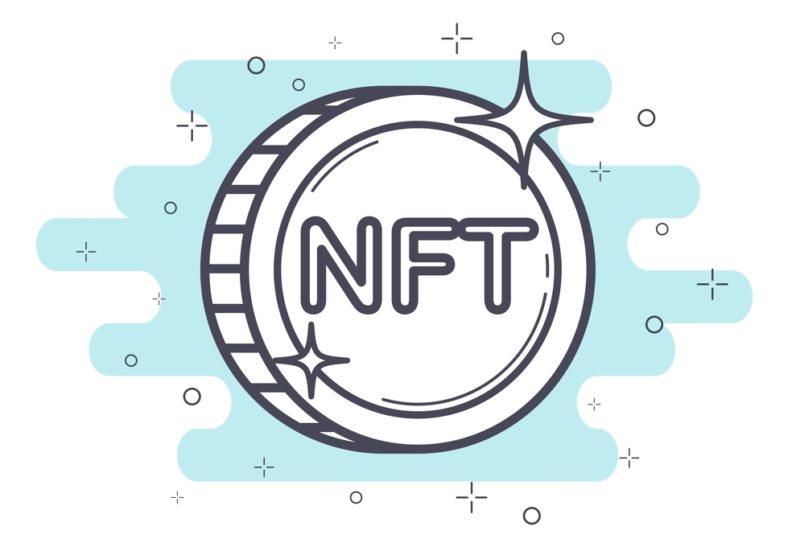
Most things in this world have some amount of fungibility — any item, good or currency that is interchangeable. For example, any five-dollar bill can be exchanged for a different five-dollar bill, or a ten-dollar bill can be exchanged for two five-dollar bills. It’s a fact that is vital for any currency to work.
On the other hand, something that is non-fungible has no identical equivalent that you can exchange it with. So, while two books may look the same and have the same content, if a famous historical figure wrote one, then the two aren’t equivalent and you can’t just swap them.
Much like with physical art, the original version of a digital asset is worth more than a copy, even if the copy is perfect. So, once someone has put the “original” on a blockchain, nothing else is truly equivalent to it. You can’t consider two otherwise identical pieces of digital art the same if one is the original.
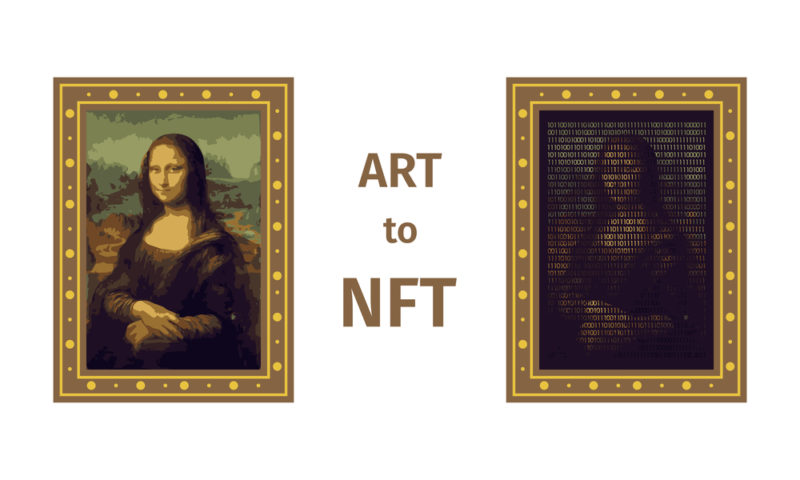
Of course, you can’t technically have the “original” of a digital work, and there’s no way to prove a specific file is that original. However, once a work is on a blockchain, it’s unique, much like an original piece of art. Since it’s unique, people often buy NFTs in the same way you might buy original artwork from your favorite artist. Read our guide to learn how to buy NFTs.
How Do NFTs Work?
The content of most NFTs isn’t actually kept in the blockchain — that would take up a lot of space. Instead, it holds a link to wherever the NFT is stored. Then, anyone can follow the link to see the digital goods that the owner has bought.
This means the blockchain acts as a certificate of authenticity, tracking who owns what in a way that no one can counterfeit. However, since the content isn’t actually in the blockchain, the owner is reliant on the server that holds their digital collectibles to not shut down or change anything.
The History of NFT
Since bitcoin was first available to the public, people have been trying to work out the limits of the technology. One of these uses was attaching real-world assets to small fractions of a bitcoin. These coins were called “colored coins” and worked by adding metadata to a satoshi — the smallest unit of bitcoin — so when someone traded it, they could transfer a physical good with it.
However, colored coins only worked if everyone involved agreed on the transaction. It only took one person disagreeing with how much of a physical good should be tied to a colored coin for it to stop working.
In 2014, Robert Dermody, Adam Krellenstein and Evan Wagner made Counterparty, a platform to trade colored coins. Although it still used the bitcoin blockchain, it solved many of the problems of NFT trading.19
Then in 2015, ethereum had its initial release. Since the ethereum blockchain was developed after colored coins and had a built-in way to trade unique, indivisible coins, it had laid the foundations for a similar concept — NFTs.20
By 2017, NFTs on ethereum started to pick up, with the creation of collectables like CryptoPunks and standards like the ERC-721. Now, the ethereum blockchain is favored among NFT traders, although other blockchains are becoming more popular.21
In late 2017, total NFT sales started to boom, going from 100 sales per week to averaging around 15,000 to 50,000 sales per week. There was a second spike two years later in late 2019 to early 2020, when sales went up to 30,000 to 80,000 per week. However, in 2021 sales have dropped back to the normal range, between 15,000 and 50,000 sales per week.1
Can NFTs Be Hacked?
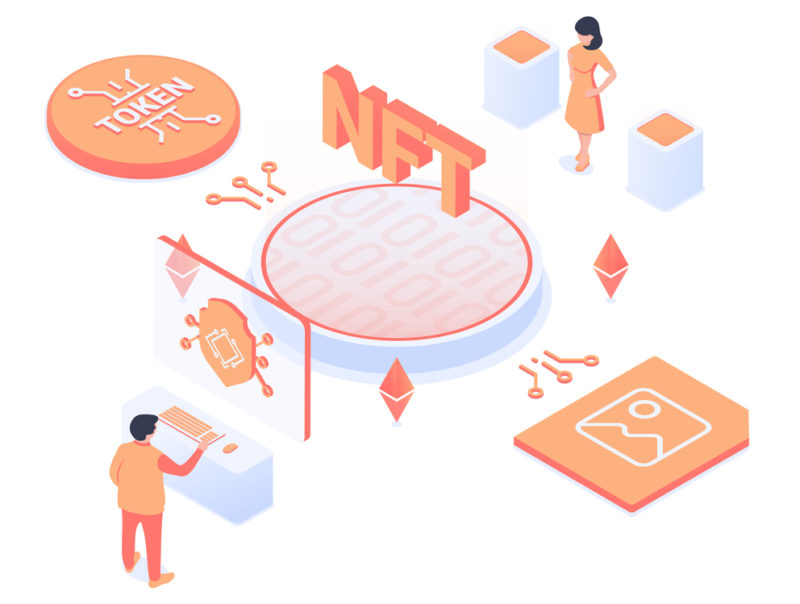
Cryptocurrencies and blockchains are known for their security and how difficult it is to manipulate them. However, this doesn’t mean there’s no way to commit fraud.
Since you have to buy NFTs through a website, if a criminal accesses your account, they can simply trade your art to their own account for free, then resell it for a quick buck and get away. Luckily, you can decrease the chances of someone accessing your account fraudulently by using a decent password and two-factor authentication, if the platform supports it.6
However, there is another way to sell fraudulent NFTs through “sleepminting.” This technique lets you sell an NFT under someone else’s name. Recently, this exploit was used to sell a fake copy of Beeple’s $69 million piece. You can check if this exploit is being used by comparing the seller’s and artist’s numerical IDs, but it’s easy to be scammed if you aren’t being careful.7
Read our NFT scam guide to learn more. We also have a comprehensive guide on how to overcome these scams and secure your NFT assets.
20 NFT Statistics, Facts & Trends
Now that we’ve gone through what non-fungible tokens are and some of the history behind them, we can dive into some statistics about NFTs. We’ll start with some more general NFT facts, then move on to specifics like the most expensive NFTs, NFT firsts, the NFT market history and some NFT trends.
General NFT Facts and Statistics
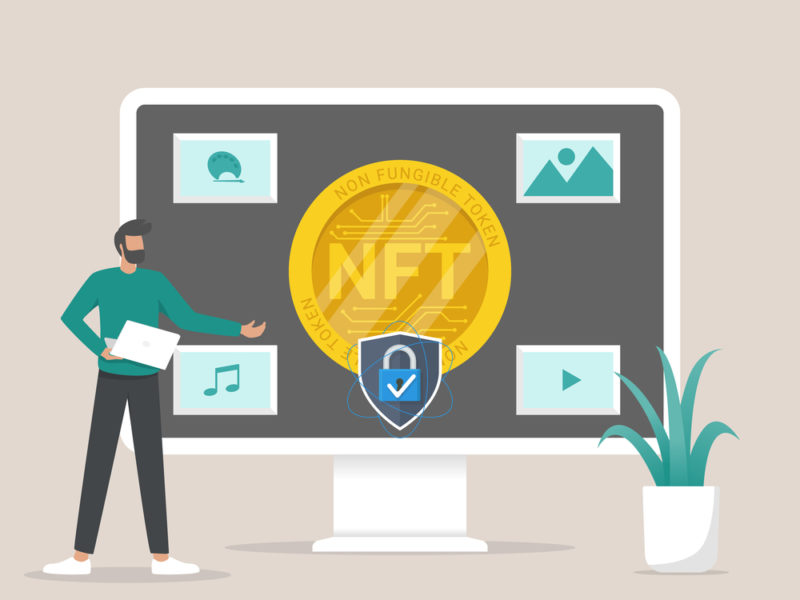
1. How Many Buyers Are There?
According to nonfungible.com — a site that tracks NFT transactions on popular marketplaces — most days in April and May of 2021 had between 1,000 and 3,000 unique wallets buying NFTs.
This was a total of almost 30,000 unique buyers in April and almost 25,000 in May. This is down slightly from the 39,000 unique buyers throughout March, but this is a significant increase in buyers compared to 2020, when most months saw fewer than 10,000 unique buyers.1
2. How Much Does an NFT Sell for on Average?
NFT trackers and marketplaces often give an average sale price — when you add all of the sale prices together and divide by the number sold — so big, one-off sales can distort the numbers and make it seem like average NFTs will go for thousands of dollars.
Instead, artist Parker worked with an unnamed data scientist to analyze primary NFT sales on OpenSea between March 14 and March 24 in 2021. They found that over a third of sales went for under $100, and 53.6 percent went for under $200.2
So although some NFTs may go for millions, most don’t even break $200. This looks even worse when you consider that the costs of minting and selling an NFT can range between $70 and $150 — enough to turn this small profit into a loss.
3. What Is the Energy Usage of NFTs?
You may have heard about the insane energy cost of cryptocurrencies and NFTs, and it is partially true. Digiconomist.net estimates that a single ethereum transaction takes around 120kWh of energy — just over four days of power for an average U.S. household. Since most NFT sales rely on the ethereum blockchain and there are thousands of sales each day, that energy usage is significant.3
However, ethereum is also in the process of moving from a proof-of-work model to a proof-of-stake model. This has been a long-term project for the Ethereum Foundation, and may reduce the energy per transaction to as low as 35Wh, as there will no longer be countless computers competing to finish each task.4
If it works, this is a reduction from an annual power usage similar to some medium-sized countries to that of a small U.S. town. Since these transactions would use some energy anyway, this move is a good step toward making cryptocurrencies and non-fungible tokens much better for the environment.
4. What Is the Largest NFT Marketplace?
The largest NFT marketplace by total volume traded is NBA Top Shot, with over $600 million all-time volume traded in mid 2021. However, if you look just at recent sales, OpenSea, which hosts trades valued between $70 and $90 million every 30 days, takes the top spot in mid 2021.5
If you look at the number of traders rather than total value, the Atomic Market and NBA Top Shots are the largest. The Atomic Market has had over 440,000 all-time traders and around 150,000 over 30 days in mid 2021, and the NBA Top Shots have just over 400,000 all time and 160,000 over 30 days in mid June, with nothing else currently getting close.
Most Expensive NFTs
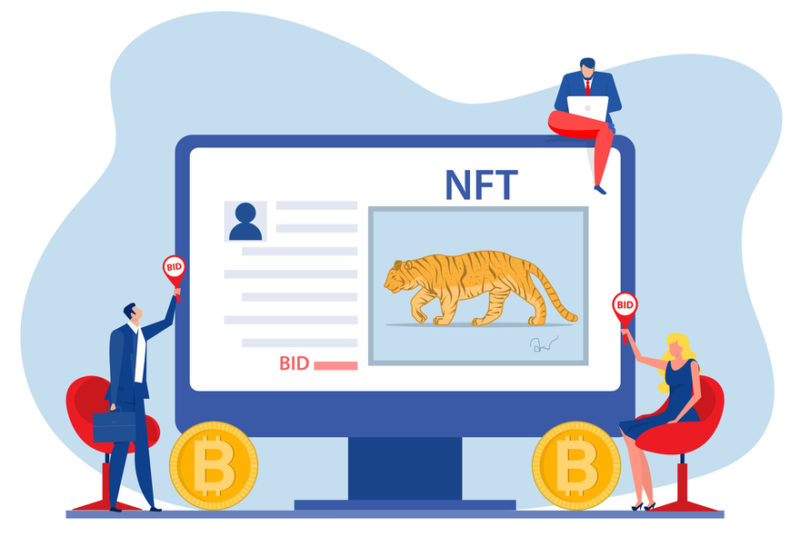
5. What’s the Most Expensive NFT Ever Sold?
Selling for $69.3 million, Beeple’s “Everydays: the First 5000 Days” is the most expensive NFT ever sold. After posting a new piece of art every day for 5,000 days — from May 2007 to February 2021 — Beeple put them all into one picture and sold it at the auction house Christie’s.8
Vignesh Sundaresan eventually won the auction on March 11 for 42,329 ether. This piece was almost 10 times the price that any individual NFT had gone for before it was sold. Although it barely makes it onto Wikipedia’s list of the most expensive works of art, this does suggest that NFTs could become as valuable an art form as any other in the future.9
6. What’s the Most Expensive NFT Video Ever Sold?
Not only does he have the most expensive NFT of all time, but in February 2021, Beeple’s “Crossroad” sold for $6.6 million, making it the most expensive video art sold as an NFT. This short, 10-second animation depicts a giant Donald Trump — lying on the ground and covered in logos and slogans — with people walking past.10
7. What’s the Most Expensive NFT Song Ever Sold?
Back in March 2021, SlimeSunday and 3LAU put a song up for auction on Nifty Gateway. The auction winner — who paid $1.33 million to name and own this NFT — would later name this song “Gunky’s Uprising.”11
8. What’s the Most Expensive NFT Top Shot Ever Sold?
As we mentioned earlier on, NBA Top Shots — short clips of the best shots in NBA history — are collectively a massive NFT market. These are the digital equivalent of collectible cards, and many people open packs to see what random ones they get, with many being sold off for small amounts of money.
However, on February 22, 2021, number 29 of the 49 cards in the Cosmic Series 1 set — LeBron James “cosmic” dunk — sold for $208,000. Cards have hit over $100,000 before, particularly the rarer shots from more popular players, but this is the first and only one to get past $200,000.12
9. What’s the Most Expensive NFT Tweet Ever Sold?
Although tweets aren’t normally high up on people’s lists of what constitutes art — and not everyone wants a digital certificate that says you own a specific tweet — on March 22, 2021, Twitter CEO Jack Dorsey sold his first ever tweet as an NFT.
This 15-year-old tweet simply said “just setting up my twttr” and was sold for $2.9 million. So, while random tweets by regular people probably aren’t going to make any money, NFTs could let people sell viral tweets or celebrities sell ones that were particularly popular to any fans who might want to own them.13
10. What’s the Most Expensive NFT Virtual Land Ever Sold?
Over the last few years, crypto games — games that use cryptocurrencies and NFTs to act as in-game items that players can trade — have risen in popularity. One of these games, Axie Infinity, had a player sell some land for $1.5 million.14 Read our online gaming statistics article for more facts.
More specifically, this land was made up of nine adjacent genesis blocks, the most valuable plots of land in the game. Since there are only 220 pieces of this land, the price is already high, but as more players join, the cost for these limited plots will probably rise even higher.
NFT Firsts

11. When Was the First NFT Minted?
Although there is some dispute over what can be considered the first NFT, Kevin McCoy’s “quantum” — minted on May 3, 2014 — was revolutionary for its time and a major factor in the development of modern NFTs.
Alongside Anil Dash using the namecoin blockchain, McCoy used “quantum” as a demonstration for how people could sell digital artwork online. Its importance in NFT history was cemented even further on June 10, 2021, when the piece was sold again for $1.47 million.15
12. What Was the First NFT Worth a Million Dollars?
Back before NFTs had their recent surge in popularity, a piece of art called the “Forever Rose” went for exactly $1 million. This sale, which was finalized on February 14, 2018, was split among 10 buyers who each paid $100,000 for one-tenth of the NFT.16
13. When Was the First Day With Over 1,000 NFT Sales?
On November 24, 2017, there were 3,093 NFT sales, as tracked by non-fungible.com. This was the first time daily NFT sales went over a thousand, but it would only be 16 days before sales hit their all-time peak of over 52,000 in one day.1
NFT Market History

14. How Much is Spent on NFTs Each Week?
Since the first week in September 2020, at least $1 million has been spent on NFTs in any seven-day period. Of course, this isn’t much compared to the $176 million spent in the first week of May 2021, but since May, sales appear to have settled to between $10 and $20 million a week.1
15. What Was the Total Value of NFT Sales In 2020?
The total value of all NFT transactions in 2020 hit just over $250 million, almost four times the $62.9 million that was traded in 2019. The market cap — representing the total value of all assets — also hit $338 million in 2020.17
16. What Were NFT Sales Figures at the Start of 2021?
The first quarter of 2021 saw a total of $2 billion in total sales, according to nonfungible.com’s quarterly report. This is over 131 times the sales value in the first quarter of 2020, and as it grows, it only attracts more buyers — so it could continue to become worth even more in the future.18
17. What Are the Fastest Growing NFT Market Segments?
Although NFT artwork sparked the explosion in sales back in February 2021, it was the collectibles that continued this growth into March. This growth mostly comes from CryptoPunks — small pixel-art images that are generated algorithmically. However, collectibles that aren’t included in nonfungible.com’s statistics — such as NBA Top Shots — have experienced similar growth rates.18
NFT Trends

18. Number of Sales Over Time
Back in 2017, even a good week might barely get 100 total sales. However, after NFT sales spiked in December of that year, it only went back down to around 15,000 sales a week. Since then, NFT weekly sales have varied between 15,000 and 50,000.
For the months between November 2019 and April 2020, there was an increase in weekly sales, with most weeks between 30,000 and 80,000. However, after that, NFT sales went down to around 10,000 and have barely returned to the 15,000 to 50,000 range.1
19. Value of Sales Over Time
For most of 2017, the total value of NFT sales each week was firmly below $10,000. Then, during the winter spike, it hit a peak of $13.9 million. This settled down to around $450,000 each week, occasionally spiking as high as $6 million on a busy week.
In September 2020, despite sales not increasing much, the total value of those weekly sales hit $4.8 million. The weekly sales would then stay between $2 and $4 million until late January 2021, where it began to increase to a peak of $176 million in May. After this, the weekly sales fell, but they’ve stayed above $10 million so far.1
20. Increase in Active Wallets Over Time
The total number of active wallets started in double figures and first went over 100 on November 24, 2017. At the 2017 peak, it hit 34,985 active wallets in a week, but quickly fell and settled into the 2,000 to 4,000 range. This slowly increased over time, with late 2019 seeing around 4,000 to 5,000 active wallets each week, which went up to the 6,000 to 8,000 range by late 2020.
In February 2021, the weekly active wallets went above 10,000 for the first time since 2017. During March 2021, this number hit 20,000, but it has since leveled out to between 8,000 and 12,000. If it stays in this range, this means the weekly active wallets would have roughly tripled in just four years.1
Final Thoughts: NFTS
Artwork has always been an interesting market, and now that it’s easier to access, there are thousands of people getting involved. This has led to some intense bidding wars and odd sales, which can be fascinating to look into.
However, If you’re still hungry for more information about NFTs and blockchains, check out our more detailed description of what bitcoin is. On the other hand, if you want more statistics, read our articles on facts about VPNs, online shopping statistics and remote work trends.
Either way, you’ll be sure to learn plenty. When you’re ready to dip your toes into the NFT business, be sure to use the best VPN for NFT.
Are you interested in trading NFTs? Did any of these statistics surprise you? Were there any interesting facts we missed? Let us know your thoughts in the comments section below. Thanks for reading.
Sources:
- nonfungible.com
- thatkimparker.medium.com
- digiconomist.net
- blog.ethereum.org
- dappradar.com
- businessofbusiness.com
- timdaub.github.io
- onlineonly.christies.com
- en.wikipedia.org
- niftygateway.com
- niftygateway.com
- nbatopshot.com
- coindesk.com
- news.artnet.com
- money.cnn.com
- nonfungible.com
- nonfungible.com/nft-report
- crunchbase.com
- blog.ethereum.org
- techcrunch.com
FAQ
According to nonfungible.com, there were between 20,000 and 40,000 unique buyers in any 30-day period between March 1 and May 31 of 2021. [1]
NFTs can sell from a few dollars to a few million dollars, depending on the specific content of the NFT. However, most NFTs sell for under $200, which can even result in a loss if you include the high costs of minting and selling them. [2]
In the first quarter of 2021, nonfungible.com estimated around $2 billion were spent on NFTs. However, this doesn’t include things like the NBA Top Shots, which make up almost half a billion on top of this. [18]
